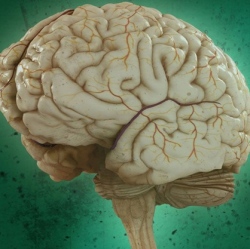
Brain scans from nearly 200 adolescent boys provide evidence that brains of compulsive video game players are wired differently. Chronic video game play is associated with hyperconnectivity between several pairs of networks. Some of the changes are predicted to help players respond to new information.
Other changes are associated with distractibility and poor impulse control. The research, a collaboration between the University of Utah School of Medicine, and Chung-Ang University in South Korea, was published online in Addiction Biology on Dec. 22, 2015.
“Most of the differences we see could be considered beneficial. However the good changes could be inseparable from problems that come with them,” says senior author Jeffrey Anderson, M.D., Ph.D., associate professor of neuroradiology at the University of Utah School of Medicine.
Those with Internet gaming disorder are obsessed with video games, often to the extent that they give up eating and sleeping to play. This study reports that in adolescent boys with the disorder, certain brain networks that process vision or hearing are more likely to have enhanced coordination to the so-called salience network.
The job of the salience network is to focus attention on important events, poising that person to take action. In a video game, enhanced coordination could help a gamer to react more quickly to the rush of an oncoming fighter. And in life, to a ball darting in front of a car, or an unfamiliar voice in a crowded room.
“Hyperconnectivity between these brain networks could lead to a more robust ability to direct attention toward targets, and to recognize novel information in the environment,” says Anderson. “The changes could essentially help someone to think more efficiently.” One of the next steps will be to directly determine whether the boys with these brain differences do better on performance tests.
More troublesome is an increased coordination between two brain regions, the dorsolateral prefrontal cortex and temporoparietal junction, a change also seen in patients with neuropsychiatric conditions such as schizophrenia, Down’s syndrome, and autism. Hyperconnectivity between the two regions is also observed in people with poor impulse control.
